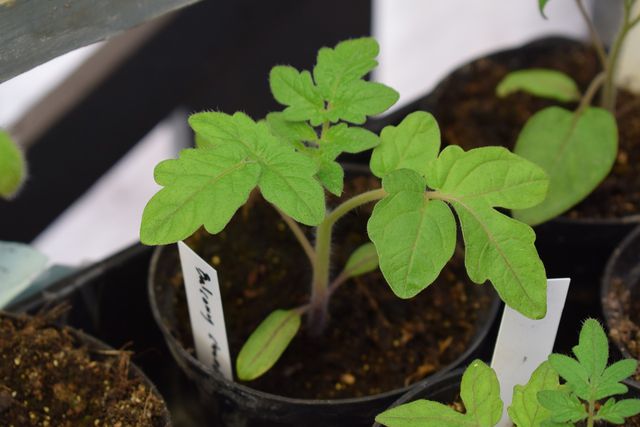Pricking out tomatoes is not difficult if you keep a few things in mind. With a little flair, you can lay the foundation for strong plants and a good harvest.
The basic principle: the young tomato plants need air and light to grow. When you prick them, you transplant them into their own pot. There they have enough space to develop strong roots. Pricked tomatoes don’t have to compete with other seedlings for nutrients.
Contents
Pricking out tomatoes: The right time

About three weeks after sowing, you can prick out your tomato seedlings. This can be seen when the first pair of true leaves appears after the cotyledons.
To prick out your tomatoes you need:
clean pots with a maximum diameter of ten centimeters and holes in the bottom. In this way you avoid waterlogging. You can buy the pots in nurseries or used online. Sometimes the pots are even given away on the Internet.
A suitable substrate, for example peat-free growing soil. The soil for your tomato seedlings should be loose, moist and low in nutrients. You can use organic sowing soil or special tomato soil. The substrate may also be fertilized a little. Coco soil is also a possibility. Unfortunately, it has long transport routes behind it and is therefore not very sustainable. In any case, you should at least look for a GEPA certification.
A suitable tool. You don’t have to use a special pricking rod from the specialized trade. A clean pen or spoon are also very suitable.
Tip: The cleaned lower third of Tetra Paks is also well suited as a seed pot. However, don’t buy tetra packs especially to use them as plant containers. Because the packaging is not particularly environmentally friendly. Read more: Environmentally friendly beverage cartons – consumer deception?
Pricking out: a delicate touch is needed here

Once you have prepared all the new pots and filled them three-quarters full with your substrate, you are ready to go:
- First, loosen the substrate around the seedling using your pricking tool.
- Now you can carefully lift out the small plant. Be careful not to damage the roots as much as possible.
- Check that each of your seedlings is healthy. Healthy plants have white and strong roots. However, if they are brown and thin, this is a sign that too much watering has been done. You should discard such plants, as they will probably not grow well.
- Place the plantlet in the center of its new pot. You can encourage tomatoes to root more vigorously by planting them deeper than before. You can now place your seedling in the soil to about an inch and a half below its cotyledons.
- Now you can gently water your seedling. It is best to spray it only with a spray bottle. This way you won’t accidentally wash away your seedling.
- Proceed carefully and repot one plant after the other. This will prevent the seedlings from drying out too much.
- In the following days, do not expose your tomato plants to direct sunlight. You should water and fertilize them regularly, but sparingly. Soon the next pair of leaves will appear.
After 20 to 30 days you can plant your seedlings outdoors. Choose a day when the weather is even and mild. Now you should prick them out soon. Here you can find out how to prick out the plants.

